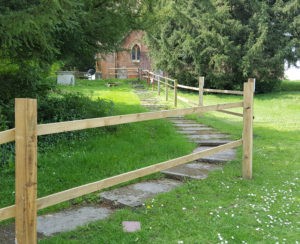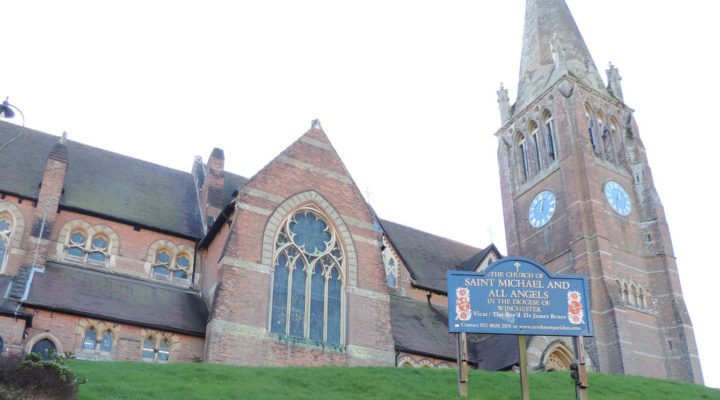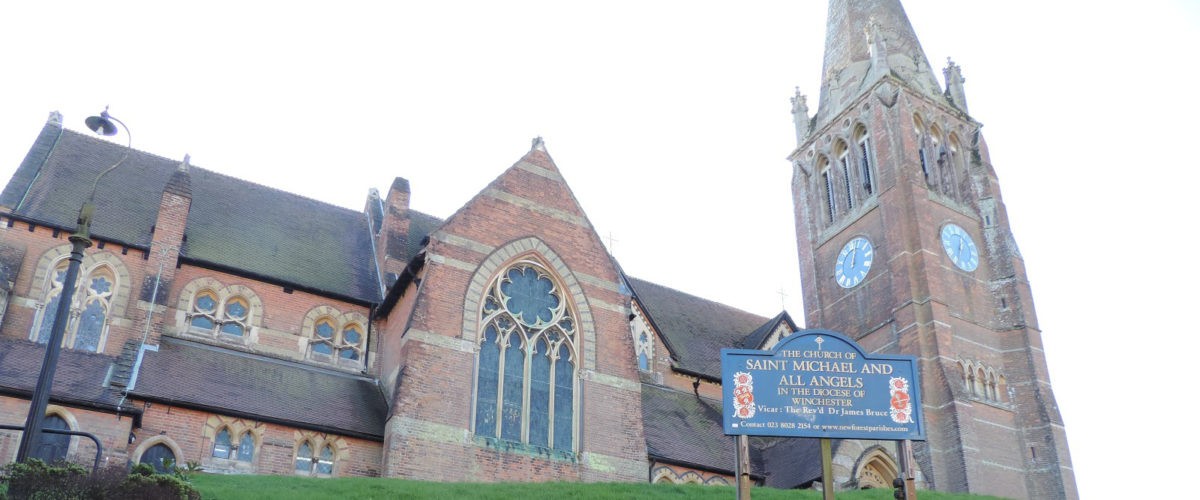On holiday in the southwest coastal and midlands regions of England, we visited the small village of Lyndhurst, still known as the capital of The New Forest, because William the Conqueror established the area as a royal hunting ground back in 1079.
The Church of St. Michael and All Angels perches precariously at the top of a steep hill, overlooking the tiny town. Like many historic church buildings today, my guess is that most visitors are travel-weary tourists like me, intrigued by its architecture and history rather than by devout worship of God and a serious intent to follow Jesus.
The church and its grounds, with the aged cemetery surrounding its venerable walls, stand as a silent, yet poignant and compelling historical statement; without uttering a sound, the place speaks in brick, mortar and moldy ornaments of the passage of centuries and the persistence of the venerable institution known in the Bible as the “Bride of Christ.”
“Without uttering a sound, the place speaks in brick, mortar and moldy ornaments.”
In my travel guide, I read of this little church’s claim to fame. Among those buried in the churchyard, the church boasts of Alice Liddell, Lewis Carroll’s inspiration for Alice of his famous Alice in Wonderland. Her burial plot has, today, been cordoned off and a full bed of roses now grows over this otherwise little-known woman’s body.
What struck me as most interesting, however, was not the burial ground of a woman pseudonymously immortalized many years ago by a writer of a famous children’s story. What intrigued me were the head stones of many other “regular” persons who lived and died years ago, whose families placed their mortal remains and stone markers in the old churchyard. The years have not been kind to those ancient gravestones. With the passage of time, they have fallen down and, doubtless, they and even the graves themselves have been crowded out with the inevitable “population explosion” of the continuing deaths of others, generation after generation.

Headstones line the footpath through the churchyard (Photo: New Forest National Park Authority)
What are the living to do with these old grave markers, citing the brief or lengthy life spans and “sacred to the memory” of those long gone and now, mostly forgotten? Well, the wardens and leaders of the Church of St. Michael’s and All Angels have come up with a rather practical solution to this somewhat indelicate problem. They have chosen to recycle the venerable stone markers and reposition them as steps along the foot path leading up the hill to the church building.
I do not know when one has been dead long enough for one’s tombstone to be removed from the graveyard to the hillside, but it obviously happens. At some point, by some ecclesiastical dictate, the markers are transitioned from the noble and ceremonial, but challenging task of standing erect at the top of the hill to the more plebian, but functional duty of lying down on the side of the hill, the better to assist modern-day visitors to ascend the heights.
As I stepped on top of the names, dates and loving tributes, I thought to myself how effectively and exactly this pragmatic, mobility-assist solution expresses one of my life wishes. Write it down if you have to. Take note and do not forget. If there is any memory of me after my days on this earth have ended, I want the remembrance never to be carved and captured in an otherwise useless and ceremonial headstone.
Find a way to place any appropriate tribute, rather, as a steppingstone. Let whatever recollection of my life some may elect to recall be used in a handy, helpful manner, the better to stabilize the foot-sore feet and assist the daunting journeys of fatigued pilgrims in the struggle of their uphill, earthly and eternal climb.

Bob Newell
Bob Newell has served as a university professor and administrator, a local church pastor and a cross-cultural missionary. He and his wife, Janice, now live in Georgetown, Texas, and he serves churches as transition coach and intentional interim pastor. They were the founders and remain advocates of PORTA, the Albania House in Athens, Greece.
Related articles:
‘Will it come like this, the moment of my death?’ Living and dying in a COVID-19 world | Opinion by Bill Leonard
Ashes to ashes: In debate over burial or cremation, some things get lost


